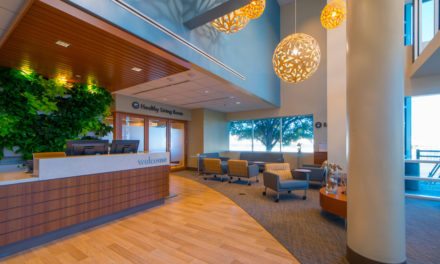AIA releases latest Consensus Construction Forecast
WASHINGTON – Aug. 8, 2018 – Construction spending is projected to grow through 2019, according to a new consensus forecast from The American Institute of Architects (AIA).
Spending on nonresidential buildings nationally increased only modestly last year, barely outpacing inflation in building costs. Halfway through the seventh year of continuous growth for the cyclical construction industry, 2018 might have looked to be the year that the industry would enter another recession. However, when polled at the beginning of this year, the AIA Consensus Construction Forecast Panel—consisting of leading economic forecasters— instead saw an acceleration in activity, projecting 4.0 percent growth in 2018 and a nearly equal 3.9 percent in 2019.
“At the halfway point of the year, this panel is even more optimistic,” said AIA Chief Economist Kermit Baker, Hon. AIA, PhD. “Their forecasts have been marked up to 4.7 percent growth in spending for this year and an additional 4.0 percent in 2019. If these projections materialize, by the end of next year the industry will have seen nine years of consecutive growth, and total spending on nonresidential buildings will be 5 percent greater—ignoring inflationary adjustments—than the last market peak of 2008.”
The AIA Consensus Construction Forecast panel is comprised of Dodge Data & Analytics, Wells Fargo Securities, LLC, IHS Economics, Moody’s Economy.com, ConstructConnect, Associated Builders & Contractors, and FMI. The forecast has been conducted for 18 years.
| Market Segment Consensus Growth Forecasts | 2018 | 2019 |
| Overall nonresidential building | 4.7% | 4.0% |
| Commercial/industrial | 6.7% | 3.4% |
| Hotels | 7.9% | 3.6% |
| Office space | 6.6% | 4.1% |
| Retail | 6.3% | 2.7% |
| Industrial | -0.1% | 4.9% |
| Institutional | 4.5% | 4.5% |
| Public safety | 10.9% | 5.9% |
| Healthcare facilities | 4.7% | 4.4% |
| Education | 4.0% | 5.2% |
| Amusement / recreation | 4.0% | 2.8% |
| Religious | -4.1% | 0.0% |
Learn more about the Consensus Construction Forecast online.
About AIA
Founded in 1857, AIA consistently works to create more valuable, healthy, secure, and sustainable buildings, neighborhoods, and communities. Through more than 200 international, state and local chapters, AIA advocates for public policies that promote economic vitality and public wellbeing.
AIA provides members with tools and resources to assist them in their careers and business as well as engaging civic and government leaders and the public to find solutions to pressing issues facing our communities, institutions, nation, and world. Members adhere to a code of ethics and conduct to ensure the highest professional standards.




